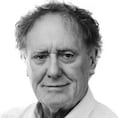Michael Courtney was a disappointment to many of us who were at UCD with him in the mid-1960s.
I told him when we last met that the expectation had been he would have been a cardinal by then, in line for the big job when it next arose. He was faintly amused.
We were both elected to the Students Representative Council at UCD for the same class, on the same day, in 1963. I thought then he was certain to enter politics (Fianna Fáil) and certain to be a Minister by his mid-30s. Michael O'Kennedy would have had an even more troublesome constituency contender in Tipperary North than Michael Smith and Michael Smith would not have been heard of outside a suburb of Roscrea. But to the surprise of many, Michael Courtney become a priest.
At that last meeting, he spoke of his time in Cuba and how he had got to know Fidel Castro. It is no surprise that he was to be appointed papal nuncio in Havana in 2004. I wrote to him on his appointment in 2000 as archbishop and papal nuncio to Burundi, congratulating him on his overdue elevation and expressing wonderment with the Burundi appointment - teasingly I suggested the people of Burundi had suffered enough.
In fact that appointment was a measure of the esteem in which he was held by the Vatican for the peace process there was well under way at the time and the complexity and intractability of the conflict demanded ingenious diplomatic skills which Michael had in abundance.
Burundi was first occupied by the hunter-gatherer Twa people ("pigmies")and later by cultivators from central Africa in around the 11th century - they became known as Hutu. Five centuries later pastoralists from southern Ethiopia settled in Burundi and these were known as Tutsi. As was common elsewhere in Africa, pastoralists assumed a superior social position vis-à-vis cultivators and so too with the Tutsi and Hutu.
However, the ethnic demarcation lines became blurred as the Tutsi adopted the Hutu language and religion, intermarriage became common, and different social stratifications emerged. It became possible even for people to move from Tutsi to Hutu and vice versa.
That blurring of identities ended with colonialism. First the Germans and then the Belgians. The colonists and Christian (especially Catholic) missionaries interpreted social stratification in terms of rigid ethnic categories and allocated political, social and wealth accordingly. First they favoured the Tutsi, then, when Africa was moving towards independence in the 1950s, they switched allegiance to the majority Hutu population. (Burundi is about the size of Munster with a population of 6 million, which is 84 per cent Hutu and 16 per cent Tutsi).
When independence came to Burundi in 1962, there was unprecedented hostility between Hutus and Tutsis. At first there was a constitutional monarchy with power-sharing administrations, which proved ineffective.
There were a succession of massacres, the worst, up to then, in 1972, when 30,000 were killed. I visited Burundi in 1996 and an elderly American missionary lady told me at her home on the hills outside Bujumbura, how she viewed from there truck loads of "smalls" (Hutus) being loaded up by the "talls" to be massacred.
In a coup in 1987, Maj Pierre Boyoya, a Tutsi, came to power. He promised "profound change" but before he could institute such change there was a further mini-genocide in August 1988 when another 20,000 were slaughtered.
Boyoya appointed a Hutu prime minister and moved towards democratic elections. These occurred in 1993 with the election of Melchior Ndadaye, a Hutu, as president. A few months afterwards, he was murdered by the Tutsi-dominated army and another massacred occurred, this time with up to 30,000 people killed. The new president, Cyprien Ntaryamira, was killed when the plane carrying him and the Rwandan president, Juvenal Habyamina, was shot down coming into Kigali airport in April 1994, an act that sparked the Rwandan genocide.
There was no such mass genocide in Burundi but a slow-burning one, which since then has led to the killing of about 200,000 Burundians. Pierre Boyoya started another coup in July 1996 and returned as president and, again, he moved towards building a new arrangement which would bring the slaughter to an end.
During that trip to Burundi in 1996, I came to believe there was no resolution to that conflict. Both sides believed if they did not massacre the other side first, they themselves would be massacred. Both had grounds for believing that.
But a peace process has been put together, first by Julius Nyerere, the former president of Tanzania, then by Nelson Mandela and more recently by Thabo Mbeki, that offers some hope of peace. Earlier this year Boyoya again voluntarily gave up office and most, but, unhappily, not all the paramilitary organisations are signed up to the accord.
Michael Courtney was involved in helping to bring a final settlement and in that work and otherwise in what he did with his life, he achieved more than he possibly could have done, even as a Fianna Fáil Minister from Tipperary North.
